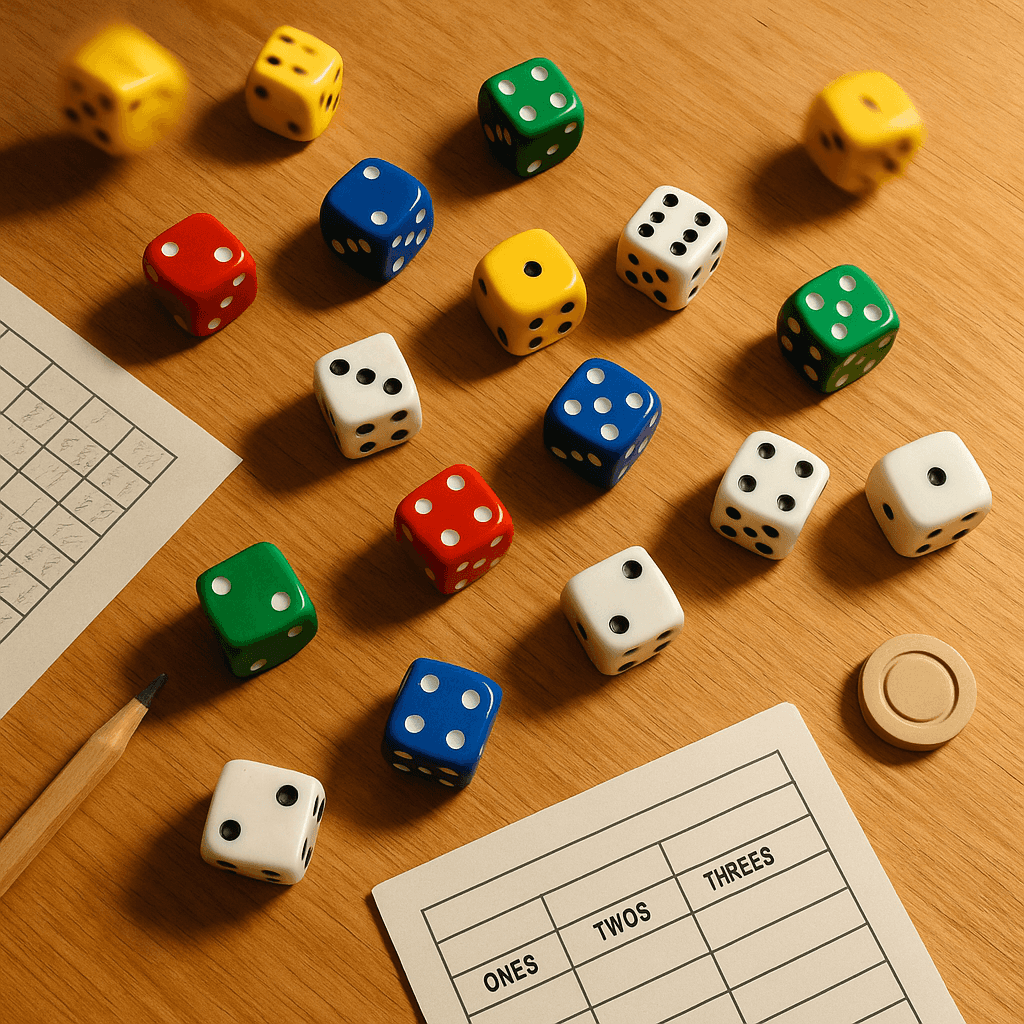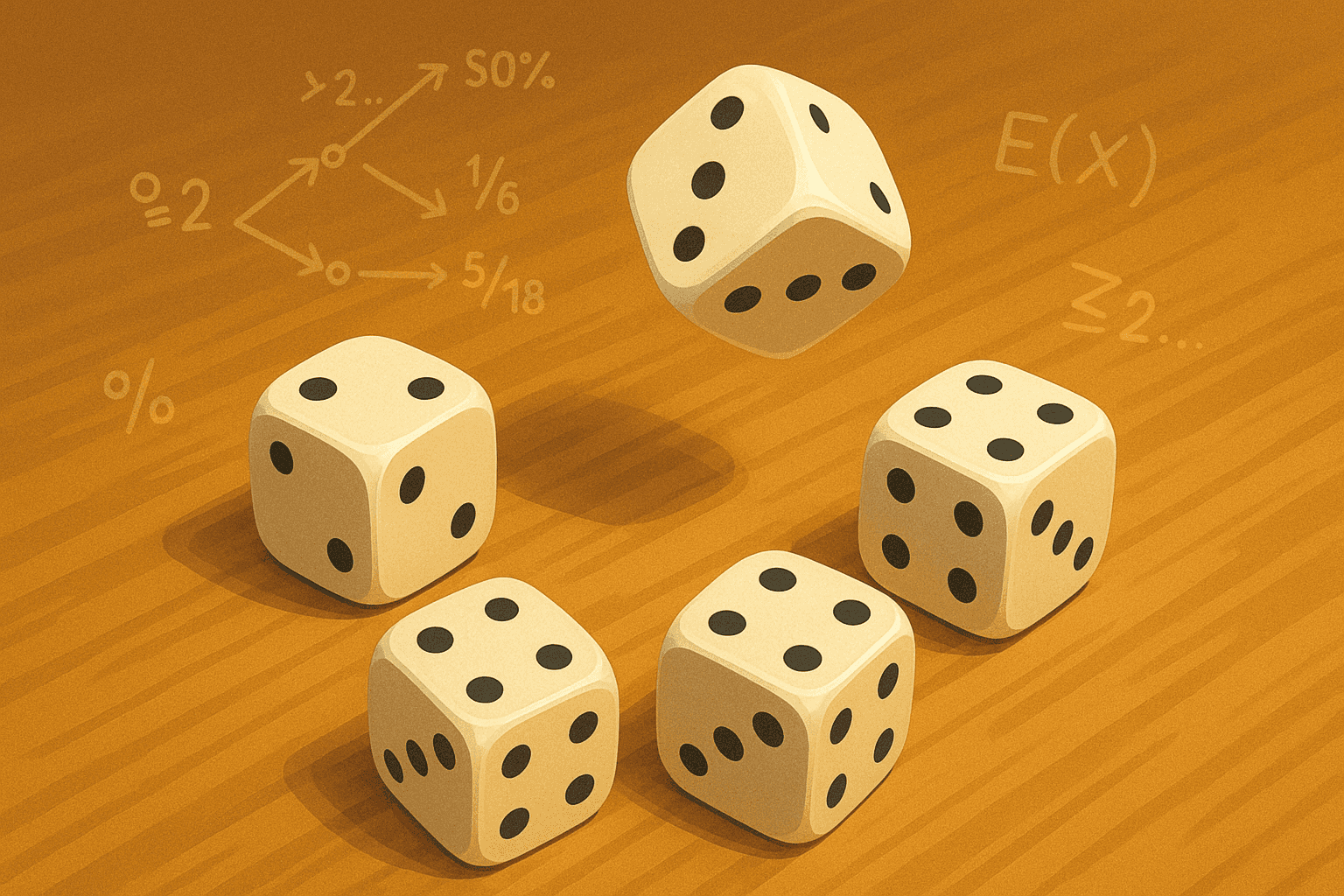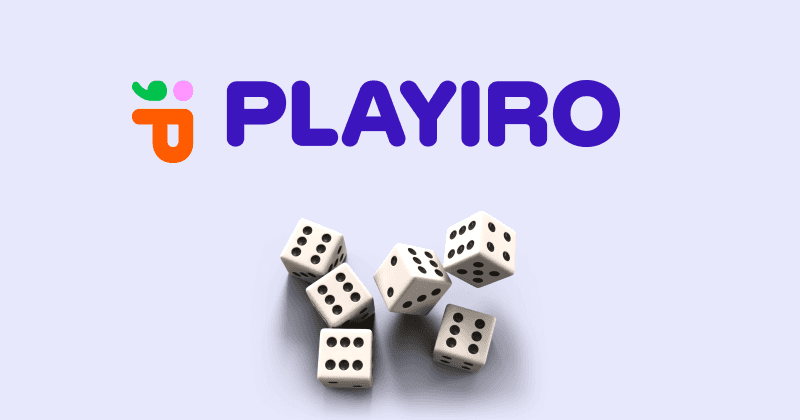
How Probability Shapes Every Dice Roll
Every time you throw a die, you’re trusting in chance. But while it feels random, every roll follows the laws of probability, the same rules that make dice games thrilling, unpredictable, and surprisingly fair. Behind every lucky streak or bad roll lies simple mathematics that explain why certain numbers show up more often and how players can use this knowledge to their advantage.
Created By Adam Davis Fernsby
The basics of dice probability
A standard die has six faces, numbered 1 through 6. Each side has an equal chance of landing face up: 1 in 6, or about 16.7%. When you add more dice, the possibilities expand, and so do the probabilities.
Here’s a quick look at some common outcomes:
| Outcome | Probability | Description |
|---|---|---|
| Rolling a 6 on one die | 1/6 | Every side has the same chance |
| Rolling a 7 with two dice | 6/36 (1/6) | The most common total |
| Rolling double sixes | 1/36 | Rare and exciting |
| Rolling any doubles | 6/36 (1/6) | Equally spaced chance |
Each roll is independent, meaning that previous outcomes don’t affect future ones, even if it feels like you’re due for a six. That’s the power (and illusion) of randomness.
Why some totals appear more often
When you roll two dice, not all totals are equally likely. For example, there’s only one way to roll a 2 (1+1), but six different ways to roll a 7 (1+6, 2+5, 3+4, 4+3, 5+2, 6+1).
That’s why in games like Catan, where dice rolls determine resource generation, numbers like 6 and 8 appear more frequently than 2 or 12. Smart players plan settlements around these probabilities, balancing risk and opportunity.
Distribution of totals for two dice:
- 2 or 12 → 1 combination
- 3 or 11 → 2 combinations
- 4 or 10 → 3 combinations
- 5 or 9 → 4 combinations
- 6 or 8 → 5 combinations
- 7 → 6 combinations
This predictable unevenness makes dice-based games dynamic and strategic. You can’t control the dice, but you can play the odds.
Luck vs. skill – when probability guides strategy
Understanding probability helps players make smarter choices in many games. In Yahtzee, for instance, knowing the odds of rolling certain combinations affects which dice you keep or re-roll. In Craps, seasoned players use probability tables to decide which bets are worth taking.
Some quick examples:
- The chance of rolling at least one six with two dice: 11/36 (≈31%)
- The chance of rolling a Yahtzee (five of a kind): 1/1,296
- The chance of rolling a pair with two dice: 6/36 (≈16.7%)
This is why probability doesn’t remove luck; it gives structure to it. Skillful players learn to read the numbers and use risk to their advantage.
Fair dice and randomness
A “fair” die means every face has the same chance of appearing. To achieve that, the die must be perfectly shaped, balanced, and evenly weighted. Even small imperfections can influence rolls; a slightly rounded edge or air bubble might make one side land more often.
In casino games dice are made with high precision, often laser-cut and tested for balance to ensure true randomness. Loaded or biased dice tilt the odds, turning what looks like luck into manipulation.
How designers use probability
Game designers rely on probability to shape pacing and excitement. A little randomness ensures that no player can dominate purely through skill, making the game fair and unpredictable.
- In Yahtzee, probability defines scoring potential and decision-making.
- In Backgammon, the dice dictate movement but allow players to plan for likely rolls.
- In Catan, number tokens reflect mathematical frequency to balance the board.
By weaving probability into design, creators make each turn feel uncertain yet meaningful, the perfect mix of control and chance.
Final thoughts
What we call “luck” in dice games is really mathematics in disguise. Every roll, whether a perfect six or a frustrating one, follows the same simple rules of probability. Understanding those odds doesn’t take away the thrill; it deepens it. The next time you throw the dice, you’ll know that what feels random is actually the heartbeat of every great game.



